Category: General
A Beginner’s Guide to Wildlife Safaris In India: Essential Tips and Information for First-Time Safari Goers

If you’ve ever dreamed of exploring the wild and coming face-to-face with majestic creatures in their natural habitat, a wildlife safari in India is an experience you simply can’t miss. But where do you start? This beginner’s guide will walk you through everything you need to know to make your first safari a thrilling and unforgettable adventure.
Why Choose India for Your First Safari?
India is a land of diverse ecosystems, ranging from dense forests to sprawling grasslands and mangrove swamps. This variety makes it one of the best countries in the world for wildlife safaris. Whether you’re looking to spot the elusive Bengal tiger, observe a herd of elephants, or catch a glimpse of rare birds, India’s national parks and wildlife sanctuaries offer it all.
Understanding Indian Wildlife Safaris
India is home to several renowned wildlife sanctuaries and national parks, each offering unique opportunities to explore the country’s rich biodiversity.
Popular Wildlife Safari Destinations in India
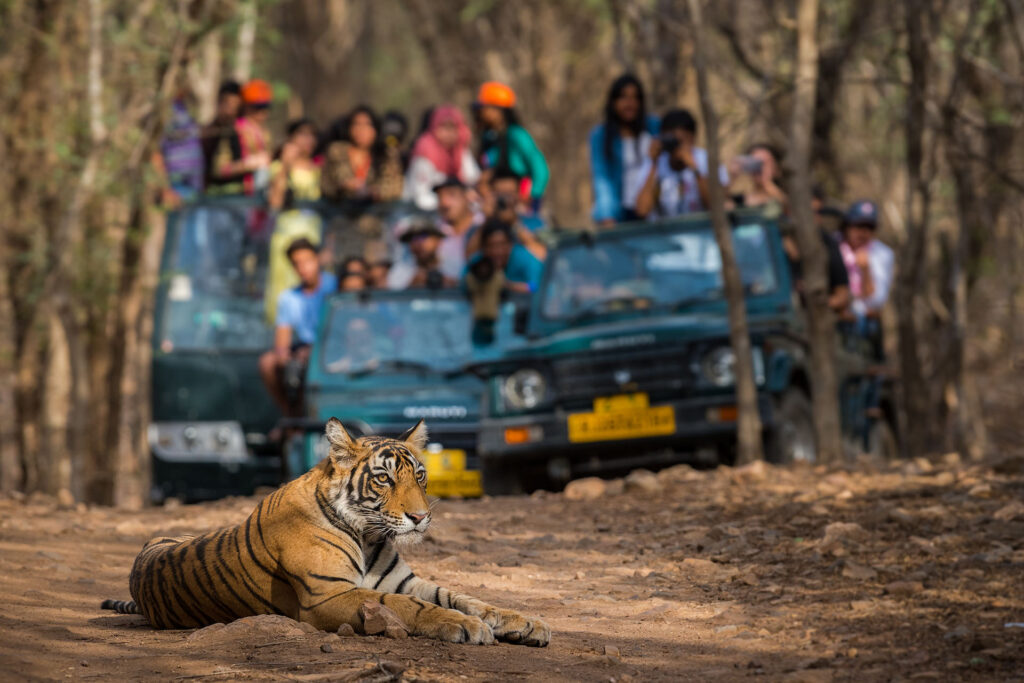
1. Ranthambore National Park
Located in Rajasthan, Ranthambore is famous for its tiger population. The park’s rugged terrain and ancient ruins make it a picturesque setting for spotting these big cats, along with leopards, sloth bears, and various species of deer.
2. Jim Corbett National Park
As India’s oldest national park, Jim Corbett in Uttarakhand is a haven for nature enthusiasts. It’s another prime location for tiger sightings, but you can also see elephants, leopards, and an array of bird species.
3. Kaziranga National Park
Situated in Assam, Kaziranga is renowned for its one-horned rhinoceroses. The park also boasts a high density of tigers and is a UNESCO World Heritage site, offering a truly unique safari experience.
4. Sundarbans National Park
Famous for its Bengal tigers that have adapted to swimming in the mangrove swamps, Sundarbans in West Bengal is one of the most fascinating and challenging safari destinations in India.
Types of Safaris Available

When planning your safari, it’s essential to understand the different types of safaris available, each offering a unique way to explore the wilderness.
1. Jeep Safaris
The most common and popular type of safari, a jeep safari allows you to cover large areas of the park quickly, increasing your chances of spotting wildlife. It’s ideal for those who prefer comfort and accessibility.
2. Elephant Safaris
For a more traditional and immersive experience, elephant safaris provide a higher vantage point and the ability to navigate through dense forests. This type of safari is particularly popular in Kaziranga National Park.
3. Boat Safaris
Perfect for exploring the waterways of the Sundarbans or the backwaters of Kerala, boat safaris offer a different perspective and the chance to see aquatic animals and birds up close.
4. Walking Safaris
If you’re up for an adventure, a walking safari lets you experience the jungle at ground level. Accompanied by experienced guides, you’ll get to explore areas that are inaccessible by vehicle, but it requires a good level of fitness and a love for the outdoors.
Planning Your Safari
A successful safari experience starts with careful planning. Here’s what you need to consider before you embark on your journey.
Best Time to Go on a Safari in India
The timing of your safari can significantly impact your experience. The best time for wildlife safaris in India is typically from October to June, with variations depending on the park. The cooler months offer more comfortable weather and better visibility as animals are more active during these periods.
Booking Your Safari
It’s advisable to book your safari well in advance, especially during peak season. Most national parks have a limited number of daily safari slots to minimize environmental impact, so early booking ensures you get the dates and times you prefer.
Choosing the Right Tour Operator
Selecting a reputable tour operator is crucial. Look for operators with experienced guides who are knowledgeable about the park’s wildlife and ecology. Reading reviews and seeking recommendations can help you make an informed decision.
Understanding Safari Packages
Safari packages can vary widely, from budget to luxury options. These packages typically include accommodations, meals, and guided tours. Make sure to choose a package that fits your budget while offering the best possible experience.
What to Pack for Your Safari

Packing the right gear is essential for a comfortable and enjoyable safari. Here’s what you should bring along.
1. Essential Clothing
Opt for lightweight, breathable clothing in neutral colors like khaki, green, or brown, which blend into the natural surroundings. Long sleeves and pants are recommended to protect against sunburn and insect bites. Don’t forget a wide-brimmed hat, sunglasses, and a sturdy pair of walking shoes.
2. Gear and Equipment
A good pair of binoculars is a must-have for any safari, allowing you to observe animals from a distance. A quality camera with a zoom lens will help you capture stunning wildlife photos. Additionally, consider packing a flashlight, a small backpack, and a refillable water bottle.
3. Health and Safety Supplies
Bring along any necessary medications, insect repellent, sunscreen, and a basic first-aid kit. If you’re visiting a malaria-prone area, consult your doctor about prophylactic medications.
Wildlife to Expect

India’s wildlife is as diverse as its landscapes. Here are some of the animals you’re likely to encounter.
1. Big Cats – Tigers and Leopards
Tigers are the star attraction of most Indian safaris, especially in parks like Ranthambore and Jim Corbett. Leopards, while more elusive, can also be spotted in several parks.
2. Majestic Elephants
These gentle giants are a common sight in many of India’s national parks, especially in the southern and northeastern regions. Watching a herd of elephants in the wild is an awe-inspiring experience.
3. Exotic Birds
India is a birdwatcher’s paradise, with over 1,300 species of birds. From vibrant peacocks to the rare and endangered Bengal florican, you’ll be treated to a colorful array of avian life.
4. Unique Reptiles and Amphibians
From the fearsome mugger crocodile to the lesser-known Indian rock python, India’s parks are home to a variety of reptiles and amphibians. Keep an eye out for these fascinating creatures, especially during boat safaris.
Safari Etiquette and Safety Tips
Your safety and the well-being of the wildlife depend on following proper etiquette during your safari.
1. Respecting Wildlife
Always maintain a safe distance from animals and avoid making loud noises or sudden movements. Remember, you’re a visitor in their home, so it’s important to respect their space.
2. Maintaining Silence and Composure
Silence is golden on a safari. The quieter you are, the more likely you are to observe animals in their natural behavior. Plus, it enhances the overall experience, allowing you to fully immerse yourself in the sights and sounds of the jungle.
3. Safety Guidelines
Always follow the instructions of your guide, stay inside the vehicle unless directed otherwise, and never attempt to feed or touch the animals. Safety should be your top priority at all times.
Capturing Your Safari Experience

One of the best parts of a safari is capturing memories that will last a lifetime.
Photography Tips
Use a camera with a good zoom lens to get close-up shots of wildlife without disturbing them. Early morning and late afternoon provide the best lighting for photography, so plan your shots accordingly.
Recording Videos
Videos can capture the dynamic movements and sounds of the wild. Keep your camera steady and anticipate the action for the best results.
Best Spots for Photos
Your guide will know the best spots for photography, but some general tips include focusing on waterholes, where animals often gather, and looking for open clearings where visibility is better.
The Importance of Conservation
Understanding and supporting conservation efforts is key to ensuring the survival of these incredible creatures.
Understanding Conservation Efforts
Many of the parks you’ll visit are involved in crucial conservation work, from protecting endangered species to restoring habitats. Educating yourself about these efforts can deepen your appreciation for the experience.
Supporting Responsible Tourism
As a safari-goer, you play a role in conservation by choosing responsible tour operators and respecting the environment. Your actions can help ensure that future generations can enjoy these natural wonders.
Embarking on your first wildlife safari in India is an adventure of a lifetime. With the right preparation, an open mind, and a respectful attitude towards nature, you’re sure to have an experience that will stay with you forever. Our travel experts will ensure your client’s journeys are seamless, enriching, and unforgettable. Plan your holiday to India with Indus for next Wildlife Safari in 2025. For detailed itineraries and quotes, contact us at enquiries@indusdiscoveries.com
So pack your bags, grab your camera, and get ready to explore the wild heart of India!
A Journey Through Rajasthan: The Land of Maharaja’s

Welcome to Rajasthan, the Land of Maharaja’s, where history whispers from every corner and culture vibrates in the air. Rajasthan, a jewel in India’s crown, stands as a testament to a glorious past of valor, grandeur, and artistic excellence. With its majestic forts, vibrant traditions, and rich heritage, it invites travelers on a journey through time.
The Magnificent Forts and Palaces:
Rajasthan is renowned for its majestic forts, opulent palaces, and intricate havelis, each a testament to the state’s rich history and architectural grandeur. Here are some of the most notable examples:
1. Amber Fort, Jaipur: A stunning fort known for its artistic Hindu-style elements, including large ramparts, gates, and cobbled paths. The fort overlooks Maota Lake and is a UNESCO World Heritage Site.
2. City Palace, Udaipur: A sprawling palace complex situated on the banks of Lake Pichola. It showcases a blend of Rajasthani and Mughal architectural styles and offers panoramic views of the city.
3. Mehrangarh Fort, Jodhpur: One of the largest forts in India, known for its imposing walls and intricately decorated palaces within, such as the Moti Mahal (Pearl Palace) and Phool Mahal (Flower Palace).
4. Umaid Bhawan Palace, Jodhpur: A magnificent palace that serves as a hotel, museum, and royal residence. It is one of the world’s largest private residences.
5. Jaisalmer Fort, Jaisalmer: Also known as Sonar Quila (Golden Fort), this living fort is home to many shops, hotels, and ancient havelis, with intricate carvings and designs.
6. Junagarh Fort, Bikaner: A fort that has never been conquered, it houses beautiful palaces like Anup Mahal, Chandra Mahal, and Phool Mahal.
7. Karni Mata Temple, Bikaner: Known as the Rat Temple, it is famed for its large population of rats considered sacred.
8. City Palace, Jaipur: A royal residence complex that includes Chandra Mahal and Mubarak Mahal, showcasing a mix of Rajput, Mughal, and European architectural styles.
9. Hawa Mahal, Jaipur: Also known as the Palace of Winds, it features a unique five-story facade with 953 small windows, allowing royal ladies to observe street festivals without being seen.
10. Patwon Ki Haveli, Jaisalmer: A cluster of five havelis, it is renowned for its elaborate carvings and mirror work.
11. Samode Palace, near Jaipur: A heritage palace hotel known for its stunning frescoes and elegant architecture.
Art and Craft of Rajasthan

Rajasthan is renowned for its traditional arts and crafts, which include:
1. Pottery: Blue pottery of Jaipur is famous for its intricate designs and vibrant colours.
2. Textiles: Bandhani (tie-dye) and block printing are traditional textile arts of Rajasthan.
3. Jewellery: Rajasthan is known for its exquisite silver and gold jewellery, including Kundan and Meenakari work.
4. Puppetry (Kathputlis): Puppetry, locally known as Kathputlis, is a traditional form of folk entertainment in Rajasthan. These handcrafted wooden puppets are used to narrate stories from Indian folklore and mythology, accompanied by music and dialogues. The puppeteers, called Bhats, are skilled storytellers who use these vibrant puppets to bring stories to life.
Iconic Dishes
1. Dal Baati Churma: A quintessential Rajasthani dish, Dal Baati Churma is a combination of lentils, baked wheat balls, and a sweet crumble. It’s a must-try for anyone visiting Rajasthan.
2. Laal Maas: Laal Maas, a fiery meat curry made with red chillies and yogurt, is a favourite among spice lovers. Its rich, robust flavours make it a standout dish in Rajasthani cuisine.
Wildlife and Nature – National Parks and Wildlife Sanctuaries

Rajasthan is home to several national parks and wildlife sanctuaries, offering a haven for a variety of wildlife species. Some of the prominent ones include:
1. Ranthambore National Park: Ranthambore National Park, located in the Sawai Madhopur district of Rajasthan, is one of the most renowned national parks in India, particularly famous for its population of Bengal tigers. Spanning an area of approximately 1,334 square kilometers, the park features a mix of dry deciduous forests, grasslands, and ancient ruins, creating a picturesque setting for wildlife viewing. A safari through Ranthambore allows visitors to spot tigers, often seen in the park’s open grasslands and near its many lakes. In addition to tigers, the park is home to various other wildlife, including leopards, deer, sloth bears, and a wide range of bird species. The park’s rich biodiversity and historical significance, including the 10th-century Ranthambore Fort, make it a popular destination for wildlife enthusiasts and history buffs alike.
2. Keoladeo National Park: A UNESCO World Heritage site, Keoladeo National Park is a haven for bird watchers. It hosts thousands of birds, especially during the winter season, making it a paradise for ornithologists.
3. Sariska Tiger Reserve: Located in the Alwar district, Sariska Tiger Reserve is a renowned wildlife sanctuary that spans over an area of approximately 881 square kilometers. Originally a hunting preserve, it was declared a wildlife reserve in 1955 and later became a tiger reserve under Project Tiger in 1978. The reserve is home to Bengal tigers, leopards, hyenas, and a diverse range of bird species. It features a mix of dry deciduous forests, grasslands, and rocky terrain, offering a rich habitat for wildlife.
4. Jhalana Leopard Reserve, Jaipur: Situated on the outskirts of Jaipur, Jhalana Leopard Reserve is a unique urban wildlife reserve known for its thriving leopard population. Spread over an area of around 23 square kilometers, it offers a rare opportunity to witness these elusive big cats in proximity to a bustling city. In addition to leopards, the reserve is home to various other wildlife, including striped hyenas, Indian foxes, and a variety of birds. The reserve’s dense forests and rocky hills provide an ideal habitat for leopards, making it a popular destination for wildlife enthusiasts.
5. Jawai Leopard Reserve, Jawai Bandh Pali: Jawai Leopard Reserve, located in the Pali district, is famous for its harmonious coexistence of leopards and local communities. The reserve, surrounding the Jawai Dam, is characterized by its rocky hills and granite formations, which provide perfect natural shelters for leopards. Unlike other reserves, the leopards of Jawai are known for their visibility, often seen lounging on rocks during the day. This unique landscape supports a diverse range of wildlife, including crocodiles, birds, and other mammals. The region’s cultural and natural beauty attracts many tourists.
6. Desert National Park, Jaisalmer: Desert National Park, located near Jaisalmer, is one of the largest national parks in India, covering an area of about 3,162 square kilometers. It showcases the unique flora and fauna of the Thar Desert, including the endangered Great Indian Bustard, a bird species that is a significant highlight of the park. The park’s landscape is characterized by sand dunes, rocky outcrops, and sparse vegetation, providing a habitat for a variety of desert wildlife. The park also hosts species like foxes, desert cats, and reptiles, making it a unique ecosystem that reflects the harsh yet beautiful environment of the desert.
Rajasthan’s Cultural Festivals
Rajasthan is a land of vibrant festivals that celebrate its rich culture and traditions. Some of the major festivals include:
1. Pushkar Festival: Held annually in Pushkar, this is one of the largest camel fairs in the world, featuring livestock trading, cultural performances, and competitions.
2. Camel Festival: Held in Bikaner, this festival celebrates the ship of the desert with camel races, dance performances, and traditional music.
3. Kite Festival: Celebrated across Rajasthan, particularly in Jaipur, the Kite Festival marks Makar Sankranti. The sky is filled with colorful kites as people compete to cut each other’s kites.
4. Jaipur Literature Festival: A renowned literary festival held in Jaipur, attracting authors, thinkers, and book lovers from around the world for discussions and cultural events.
5. Nagaur Festival: Held in Nagaur, this festival is known for its cattle fair, traditional sports, and cultural performances.
Desert Landscapes

1. Thar Desert: The Thar Desert, also known as the Great Indian Desert, is an expansive arid region that offers a unique landscape of sand dunes and sparse vegetation. Camel safaris are a popular way to explore this vast desert.
2. Sand Dunes of Sam: Located near Jaisalmer, the Sand Dunes of Sam are famous for their picturesque views and cultural performances. A night under the starry desert sky, with traditional music and dance, is an unforgettable experience.
Travel Tips for Rajasthan
Planning a trip to Rajasthan? Here are some tips to help you make the most of your visit:
1. Best Time to Visit: The ideal time to visit Rajasthan is between October and March when the weather is pleasant.
2. Travel and Accommodation: Rajasthan has a well-developed tourism infrastructure, with a range of accommodation options from luxury hotels to budget-friendly stays.
A journey through Rajasthan is like walking through a living museum, where each city tells a story of bravery, romance, and artistry. From the grandeur of its forts and palaces to the vibrancy of its culture and the richness of its cuisine, Rajasthan offers an experience that is both enriching and unforgettable. The Land of Kings awaits you with open arms, ready to share its timeless tales and captivating charm.
Indus Discoveries has been researching, developing, and organizing small group tours to unique destinations in India, Nepal, and Bhutan for the past 24 years.
If you want to discover iconic Rajasthan please contact us at: enquiries@indusdiscoveries.com
Industry Insight: Trends and Innovations in Travel and Tourism for 2024

The travel and tourism industry continues to evolve, shaped by technological advancements, changing consumer preferences, and global events. As we move through 2024, several key trends and innovations are emerging that are set to redefine the landscape of travel. This blog delves into the latest industry insights, highlighting what travelers, businesses, and stakeholders can expect in the coming months.
Sustainable Travel Takes Center Stage

Sustainability is no longer a niche concern; it has become a primary focus for travelers and travel companies alike. In 2024, eco-friendly travel options are more in demand than ever. travelers are increasingly seeking out destinations, accommodations, and transportation methods that minimize environmental impact. This trend is driving innovations in green technology, such as electric aviation and carbon offset programs, and encouraging travel companies to adopt more sustainable practices.
Key Insights:
1. Eco-Friendly Accommodations: Hotels and resorts are investing in sustainable infrastructure, including solar panels, water recycling systems, and locally sourced materials.
2. Green Transportation: The rise of electric and hybrid vehicles, as well as the development of more efficient public transportation systems, is reducing the carbon footprint of travel.
3. Carbon Offsetting: Many travel companies now offer carbon offset programs, allowing travelers to compensate for their emissions by supporting environmental projects.
Technology Transforming the Travel Experience
Advancements in technology continue to revolutionize the travel industry, making travel more convenient, personalized, and enjoyable. In 2024, several tech trends are shaping the future of travel.
Key Insights:
1. AI and Personalization: Artificial intelligence is being used to create highly personalized travel experiences. From tailored recommendations to chatbots providing real-time assistance, AI is enhancing customer service and satisfaction.
2. Virtual and Augmented Reality: VR and AR are offering travelers the chance to explore destinations virtually before booking, enhancing the decision-making process and building excitement for their trips.
3. Smart Luggage and Biometric Security: Smart luggage with GPS tracking and biometric security features are improving travel safety and convenience, allowing for smoother journeys and reduced risk of lost items.
The Rise of Bleisure Travel

The blending of business and leisure travel, known as “bleisure,” is gaining popularity as remote work becomes more prevalent. In 2024, more professionals are taking advantage of flexible work arrangements to extend business trips into leisure vacations.
Key Insights:
1. Workcation Packages: Hotels and resorts are offering packages designed for remote workers, featuring amenities like high-speed internet, dedicated workspaces, and extended stay discounts.
2. Flexible Booking Policies: Travel companies are adapting to the needs of bleisure travelers by offering more flexible booking policies, including the ability to easily extend stays and modify itineraries.
3. Co-Working Spaces: The demand for co-working spaces in travel destinations is rising, providing professionals with the facilities they need to stay productive while enjoying their surroundings.
Experiential Travel and Cultural Immersion
In 2024, travelers are seeking more authentic and immersive experiences, moving away from traditional sightseeing tours towards deeper cultural engagement.
Key Insights:
1. Local Experiences: travelers are increasingly interested in activities that allow them to connect with local cultures, such as cooking classes, artisan workshops, and community-led tours.
2. Adventure and Wellness Tourism: Adventure travel and wellness tourism are on the rise, with travelers seeking activities that promote physical and mental well-being, such as hiking, yoga retreats, and eco-adventures.
3. Heritage Tourism: There is a growing interest in heritage tourism, where travelers explore historical sites and cultural landmarks to gain a deeper understanding of a destination’s history and traditions.
The travel and tourism industry in 2024 is characterized by a strong focus on sustainability, technological innovation, and the desire for authentic experiences. As these trends continue to evolve, travelers can expect a more personalized, eco-friendly, and immersive travel experience. For businesses, staying ahead of these trends will be crucial in meeting the demands of the modern traveler and thriving in an ever-changing industry landscape.
Spiritual Pilgrimages in India: Sacred Sites and Spiritual Practices

India, with its rich tapestry of religious traditions and historical depth, is a premier destination for spiritual pilgrims. The country’s landscape is dotted with numerous sacred sites, each resonating with ancient spiritual practices and profound cultural significance. Pilgrimage in India is not just a journey to a physical destination, but a quest for inner peace, enlightenment, and a deeper connection with the divine. Here are some of the most significant sacred sites and the spiritual practices associated with them:
1. Varanasi (Kashi)

Sacred Significance: Varanasi, also known as Kashi, is considered the spiritual capital of India. It is one of the oldest continuously inhabited cities in the world and is regarded as the holiest city in Hinduism.
Spiritual Practices:
1. Ganga Aarti: A daily ritual performed at the ghats of the Ganges River, where priests offer prayers with fire to the river goddess, Ganga.
2. Bathing in the Ganges: Pilgrims believe that a dip in the Ganges purifies the soul and washes away sins.
3. Rituals for the Departed: Many come to Varanasi to perform rites for deceased ancestors, believing that dying in Kashi ensures moksha (liberation from the cycle of rebirth).
2. Rishikesh and Haridwar

Sacred Significance: Located at the foothills of the Himalayas, Rishikesh and Haridwar are twin cities known for their spiritual ambiance and as gateways to the Char Dham Yatra (a pilgrimage to the four sacred temples in Uttarakhand).
Spiritual Practices:
1. Yoga and Meditation: Rishikesh is known as the Yoga Capital of the World, attracting seekers from around the globe to its ashrams and yoga retreats.
2. Kumbh Mela: Haridwar hosts the Kumbh Mela, one of the largest religious gatherings in the world, where millions gather to bathe in the holy river.
3. Evening Aarti at Har Ki Pauri: A mesmerizing aarti ceremony held every evening on the banks of the Ganges in Haridwar.
3. Bodh Gaya

Sacred Significance: Bodh Gaya is the site where Siddhartha Gautama attained enlightenment and became the Buddha. It is the most important pilgrimage site for Buddhists.
Spiritual Practices:
1. Meditation under the Bodhi Tree: Pilgrims meditate under the Bodhi Tree, believed to be a direct descendant of the tree under which Buddha attained enlightenment.
2. Circumambulation of the Mahabodhi Temple: Devotees walk around the temple in prayer and meditation.
3. Chanting and Offerings: Monks and laypersons engage in chanting sutras and offering flowers, incense, and lamps.
4. Amritsar

Sacred Significance: Amritsar is home to the Golden Temple (Harmandir Sahib), the holiest shrine in Sikhism. The city’s name itself means “Pool of Nectar,” referring to the holy water surrounding the temple.
Spiritual Practices:
1. Langar (Community Kitchen): Serving free meals to all visitors, regardless of religion or background, as an act of seva (selfless service).
2. Kirtan: Devotional singing of hymns from the Guru Granth Sahib, the holy scripture of Sikhism.
3. Amrit Sanchar: The Sikh baptism ceremony, held in the presence of the Guru Granth Sahib.
5. Dharamshala

Sacred Significance: Dharamshala, in Himachal Pradesh, is known as the home of the Dalai Lama and the Tibetan government-in-exile. It is a major center for Tibetan Buddhism.
Spiritual Practices:
1. Teachings of the Dalai Lama: Pilgrims attend teachings and public talks by His Holiness the Dalai Lama.
2. Meditation Retreats: Numerous centers offer meditation and Buddhist teachings.
3. Monastic Life: Visitors can experience the daily rituals and practices of Tibetan monks.
6. Puri

Sacred Significance: Puri, in the state of Odisha, is known for the Jagannath Temple, one of the Char Dham pilgrimage sites. The temple is dedicated to Lord Jagannath, a form of Lord Krishna.
Spiritual Practices:
1. Rath Yatra: The annual chariot festival where the deities Jagannath, Balabhadra, and Subhadra are taken out in grand processions.
2. Mahaprasad: The offering of food to the deities, which is then distributed among devotees.
3. Pilgrimage to the Beach: Many pilgrims visit the Puri beach, believed to have purifying qualities.
7. Tiruvannamalai

Sacred Significance: Tiruvannamalai, in Tamil Nadu, is home to the Annamalaiyar Temple, dedicated to Lord Shiva, and the Arunachala Hill, considered a manifestation of Shiva.
Spiritual Practices:
1. Girivalam (Circumambulation): Pilgrims walk around the Arunachala Hill, especially on full moon nights.
2. Darshan at Annamalaiyar Temple: Seeking blessings at this significant Shiva temple.
3. Meditation in Ramana Maharshi Ashram: The ashram of the revered sage Ramana Maharshi offers a place for deep meditation and spiritual inquiry.
8. Ajmer
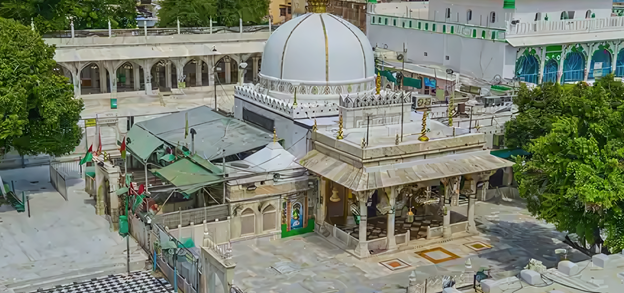
Sacred Significance: Ajmer, in Rajasthan, is known for the Dargah Sharif, the shrine of Sufi saint Khwaja Moinuddin Chishti.
Spiritual Practices:
1. Qawwali Sessions: Devotional music sessions held at the shrine.
2. Offering Chadar: Pilgrims offer a chadar (cloth) at the saint’s tomb.
3. Prayers and Offerings: Devotees pray and make offerings for blessings and spiritual fulfillment.
9. Neem Karoli Baba Ashram (Kainchi Dham)
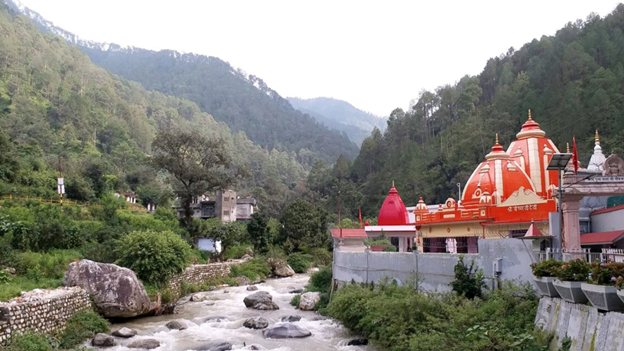
Sacred Significance: Located in Uttarakhand, the Neem Karoli Baba Ashram is dedicated to the revered saint Neem Karoli Baba, who has a large following, including notable Western devotees.
Spiritual Practices:
1. Meditation and Prayer: Devotees engage in meditation and prayer at the ashram.
2. Hanuman Chalisa Recitation: The recitation of this devotional hymn is a common practice.
3. Service (Seva): Engaging in selfless service, as taught by Neem Karoli Baba.
10. Pushkar
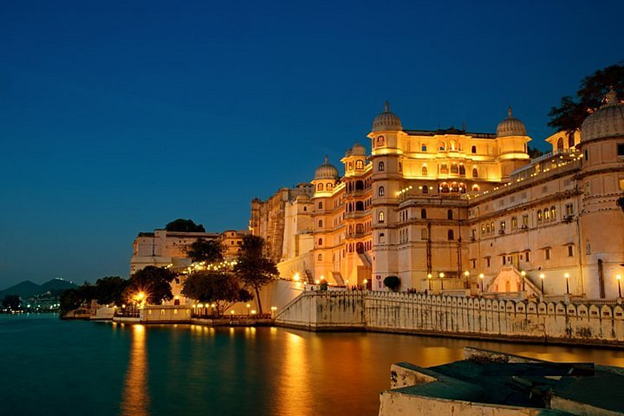
Sacred Significance: Pushkar, in Rajasthan, is famous for the Brahma Temple, one of the few temples dedicated to Lord Brahma, and its sacred lake.
Spiritual Practices:
1. Holy Dip in Pushkar Lake: Believed to purify the soul and bring blessings.
2. Pushkar Camel Fair: A unique cultural and spiritual experience.
3. Prayers at Brahma Temple: Devotees offer prayers and seek blessings from Lord Brahma.
Indus Discoveries has been researching, developing, and organizing small group tours to unique retreats in India, Nepal, and Bhutan for the past 24 years. Please contact us so that we can help you design a retreat itinerary for your clients. So they can experience the beauty and tranquillity of India, Nepal and Bhutan has to offer to a discerning traveller.
Please contact us at – enquiries@indusdiscoveries.com
Crafting Retreats for Mind, Body, and Soul

Finding a balance between mental, physical, and emotional well-being can be challenging. One unique and effective way to achieve holistic health is by attending crafting retreats. These retreats offer a perfect escape to rejuvenate your mind, body, and soul through creative expression and relaxation.
Benefits of Crafting Retreats
Mental Health Benefits
Crafting retreats are a haven for mental relaxation. Engaging in creative activities helps to reduce anxiety and stress by helping you to focus on the present moment. This mindfulness practice can improve your mental clarity and boost your mood, offering a therapeutic effect similar to meditation.
Physical Health Benefits
While it may not seem obvious, crafting can have physical benefits too. Activities like knitting, pottery, or even painting involve fine motor skills that keep your hands and fingers agile.
Emotional and Spiritual Benefits
Crafting allows you to express emotions that might be hard to articulate through words. It provides a safe space to explore your inner thoughts and feelings, leading to emotional release and spiritual growth. The sense of accomplishment from creating something with your own hands can significantly boost your self-esteem and happiness.
Tailored Retreat Packages
We understand that everyone has unique needs. That’s why we offer customized retreat packages. Our expert team crafts personalized experiences to ensure you find the peace and relaxation you deserve.
Tranquil Locations in India
Location is critical to a successful retreat. Indus Discoveries selects the most tranquil and picturesque spots in India. From secluded beaches to lush mountains, our retreats are set in the most serene environments. These hand-picked locations are perfect for disconnecting from the daily grind and reconnecting with yourself.
Top 10 Wellness Retreats to Rejuvenate Your Mind, Body, and Soul
1. Ananda in The Himalayas, Rishikesh
Nestled in the serene foothills of the Himalayas, Ananda is a luxurious retreat that offers a tranquil setting perfect for rejuvenation. The location itself, with its stunning views and peaceful atmosphere, is a haven for those seeking a break from their hectic lives.

Yoga and Meditation Offerings
Ananda is renowned for its comprehensive yoga and meditation programs. The retreat offers classes for all levels, from beginners to advanced practitioners. The focus is on traditional Hatha yoga and guided meditation sessions, designed to help you reconnect with your inner self.
Ayurveda Therapies
One of the standout features of Ananda is its Ayurveda therapies. These treatments are personalized to meet individual needs and include detoxification, rejuvenation, and stress management programs. Expert therapists use natural herbs and oils to enhance the healing process.
Unique Features
Ananda’s unique feature is its integration of wellness with the natural environment. The retreat offers outdoor yoga sessions, nature walks, and excursions to nearby spiritual sites, ensuring a holistic approach to well-being.
2. Soukya, Bangalore
Soukya, located in Bangalore, is a holistic health center that seamlessly blends modern medicine with traditional therapies. This renowned center offers a wide range of treatments aimed at promoting overall health and well-being.

Integration of Modern Medicine and Traditional Therapies
Soukya is unique in its approach, combining allopathic medicine with traditional Indian therapies like Ayurveda, homeopathy, and naturopathy. This integrative method ensures comprehensive care and healing.
Notable Treatments and Programs
The retreat offers personalized health programs that include detoxification, rejuvenation, weight management, and stress relief. Each program is tailored to the individual’s health needs and goals, ensuring effective outcomes.
Unique Features
One of the unique aspects of Soukya is its focus on organic living. The retreat grows its own organic vegetables and herbs, which are used in their treatments and meals, ensuring that guests receive the purest and healthiest options.
3. Ashiyana, Goa
Located on the beautiful beaches of Goa, Ashiyana is a sanctuary that offers yoga, meditation, and holistic healing programs. It’s an ideal place to unwind and reconnect with yourself amidst nature.

Yoga and Meditation Programs
Ashiyana offers a variety of yoga and meditation classes, catering to different levels of experience. The programs are designed to enhance physical, mental, and spiritual well-being, helping guests achieve a balanced state of mind.
Holistic Healing Offerings
In addition to yoga and meditation, Ashiyana provides holistic healing services such as massage therapies, detox programs, and nutritional guidance. These offerings are designed to complement the yoga practice and promote overall health.
Unique Features
Ashiyana’s unique feature is its beachfront location, which provides a serene and calming environment. The retreat’s eco-friendly accommodations and focus on sustainable living further enhance the guest experience.
4. Six Senses, Dehradun
Six Senses in Dehradun focuses on wellness and sustainability, offering a range of activities designed to revitalize the mind, body, and soul. This retreat is perfect for those looking to connect with nature while enhancing their well-being.

Focus on Wellness and Sustainability
Six Senses integrates wellness with sustainability, ensuring that their practices benefit both guests and the environment. The retreat uses eco-friendly products and sustainable practices in its operations.
Spa Treatments and Nature-Based Activities
The retreat offers a variety of spa treatments, including massages, facials, and body scrubs, using natural and organic products. Additionally, guests can participate in nature-based activities such as hiking, bird watching, and gardening.
Unique Features
A unique feature of Six Senses is its wellness screening process. Upon arrival, guests undergo a health assessment, which is used to tailor a personalized wellness plan. This ensures that each guest receives the most effective treatments and activities for their needs.
5. Osho International Meditation Ashram, Pune
Known for its dynamic meditation techniques, the Osho International Meditation Ashram in Pune provides a unique spiritual experience. This retreat is ideal for those looking to explore deep meditation and self-discovery.

Dynamic Meditation Techniques
Osho Ashram is famous for its dynamic meditation techniques, which include active and passive forms of meditation. These techniques are designed to release accumulated stress and promote inner peace.
Spiritual Exploration and Self-Discovery
The ashram offers various workshops and programs focused on personal growth and spiritual exploration. These sessions help participants delve deeper into their consciousness and discover their true selves.
Unique Features
A standout feature of Osho Ashram is its vibrant community. The ashram attracts people from all over the world, creating a diverse and dynamic environment where guests can share their experiences and learn from each other.
6. Shatam Jeeva, Jhansi
Shatam Jeeva in Jhansi offers traditional Ayurveda treatments, yoga, and meditation in a serene environment. This retreat is perfect for those seeking deep healing and relaxation.

Traditional Ayurveda Treatments
The retreat’s Ayurveda treatments are based on ancient Indian healing practices. These treatments aim to balance the body’s energies and promote natural healing through diet, herbal therapies, and lifestyle changes.
Yoga and Meditation Offerings
Shatam Jeeva offers daily yoga and meditation sessions to complement its Ayurveda treatments. These practices help in enhancing physical flexibility, mental clarity, and emotional balance.
Unique Features
One of the unique features of Shatam Jeeva is its focus on personalized care. Each guest receives individualized attention, ensuring that their specific health needs are met through tailored treatments and programs.
7. Raga Svara, Rajkot
Raga Svara in Rajkot is a wellness retreat that emphasizes holistic health through yoga, meditation, and Ayurveda. The peaceful surroundings of this retreat enhance the overall healing experience.

Holistic Health Focus
Raga Svara’s approach to wellness is holistic, considering the physical, mental, and spiritual aspects of health. This integrated method ensures comprehensive healing and rejuvenation.
Yoga, Meditation, and Ayurveda
The retreat offers a combination of yoga, meditation, and Ayurveda programs. These practices are designed to work together to enhance overall well-being and promote a balanced lifestyle.
Unique Features
A unique feature of Raga Svara is its serene environment, which provides the perfect backdrop for healing. The retreat’s tranquil atmosphere helps guests relax and immerse themselves in their wellness journey.
8. Niraamaya Surya Samudra, Kovalam
This beachfront retreat in Kovalam offers Ayurveda treatments, yoga sessions, and wellness therapies. The beautiful coastal setting adds to the rejuvenating experience, making it a perfect getaway for relaxation and healing.

Beachfront Retreat Offerings
Niraamaya Surya Samudra’s location by the sea provides a calming and refreshing environment. Guests can enjoy yoga sessions on the beach, enhancing their connection with nature.
Ayurveda Treatments and Wellness Therapies
The retreat offers a range of Ayurveda treatments, including detoxification, rejuvenation, and stress relief. These treatments are complemented by wellness therapies such as massages and hydrotherapy.
Unique Features
A unique feature of Niraamaya Surya Samudra is its blend of traditional and modern wellness practices. The retreat uses ancient Ayurveda techniques alongside contemporary wellness therapies to provide a comprehensive healing experience.
9. CGH Earth SwaSwara
SwaSwara combines yoga, meditation, and Ayurveda with art and nature walks, creating a holistic retreat for the mind, body, and soul. This unique approach ensures a well-rounded wellness experience.

Combination of Yoga, Meditation, and Ayurveda
SwaSwara offers integrated programs that include yoga, meditation, and Ayurveda. These practices are designed to promote overall health and well-being, addressing both physical and mental aspects.
Integration of Art and Nature Walks
In addition to traditional wellness practices, SwaSwara incorporates art therapy and nature walks into its programs. These activities help guests connect with their creative side and the natural environment.
Unique Features
A standout feature of SwaSwara is its emphasis on creativity and nature. Guests can engage in art workshops and explore the surrounding landscape, enhancing their retreat experience.
10. Nileshwar Hermitage
Located in Kerala, Nileshwar Hermitage offers traditional Ayurveda treatments, yoga, and meditation in a serene riverside setting. It’s an ideal place for a relaxing getaway and deep healing.

Traditional Ayurveda Treatments
Nileshwar Hermitage specializes in authentic Ayurveda treatments, using natural herbs and oils to promote healing. These treatments are designed to detoxify and rejuvenate the body.
Yoga and Meditation Offerings
The retreat offers daily yoga and meditation sessions to complement its Ayurveda treatments. These practices help in achieving a balanced state of mind and body.
Unique Features
A unique feature of Nileshwar Hermitage is its riverside location, which provides a tranquil environment for healing. The serene setting enhances the overall retreat experience, making it a perfect place to unwind.
Post-Retreat Integration
1. Applying What You’ve Learned: Take the skills and insights you’ve gained and incorporate them into your daily life. This helps to extend the benefits of the retreat beyond its duration.
2. Continuing Practices at Home: Establish a routine that includes regular crafting. This keeps the momentum going and continues to provide mental and emotional benefits.
3. Sharing Your Experience: Share your retreat experience with friends and family. This not only spreads the joy but can also inspire others to explore their creative sides.
Indus Discoveries has been researching, developing, and organizing small group tours to unique retreats in India, Nepal, and Bhutan for the past 24 years. We have worked with eminent retreat leaders, yoga and meditation teachers to curate retreat experiences tailored to their preferences.
Please contact us so that we can help you design a retreat itinerary for your clients. So they can experience the beauty and tranquillity of India, Nepal and Bhutan has to offer to a discerning traveller. Contact us at – enquiries@indusdiscoveries.com
The Best Five India Travel Videos

How about watching a few travel inspiration videos before you start your India travel this year? I understand how difficult it is for a traveler to sit tightly on a couch and daydream about the destination when already bitten by the travel bug. Do not worry! Today I have brought some antidotes to share with you all. I present you with the best five India Travel videos that will visually transport you to Incredible India.
So let us Jet Set Go… (more…)

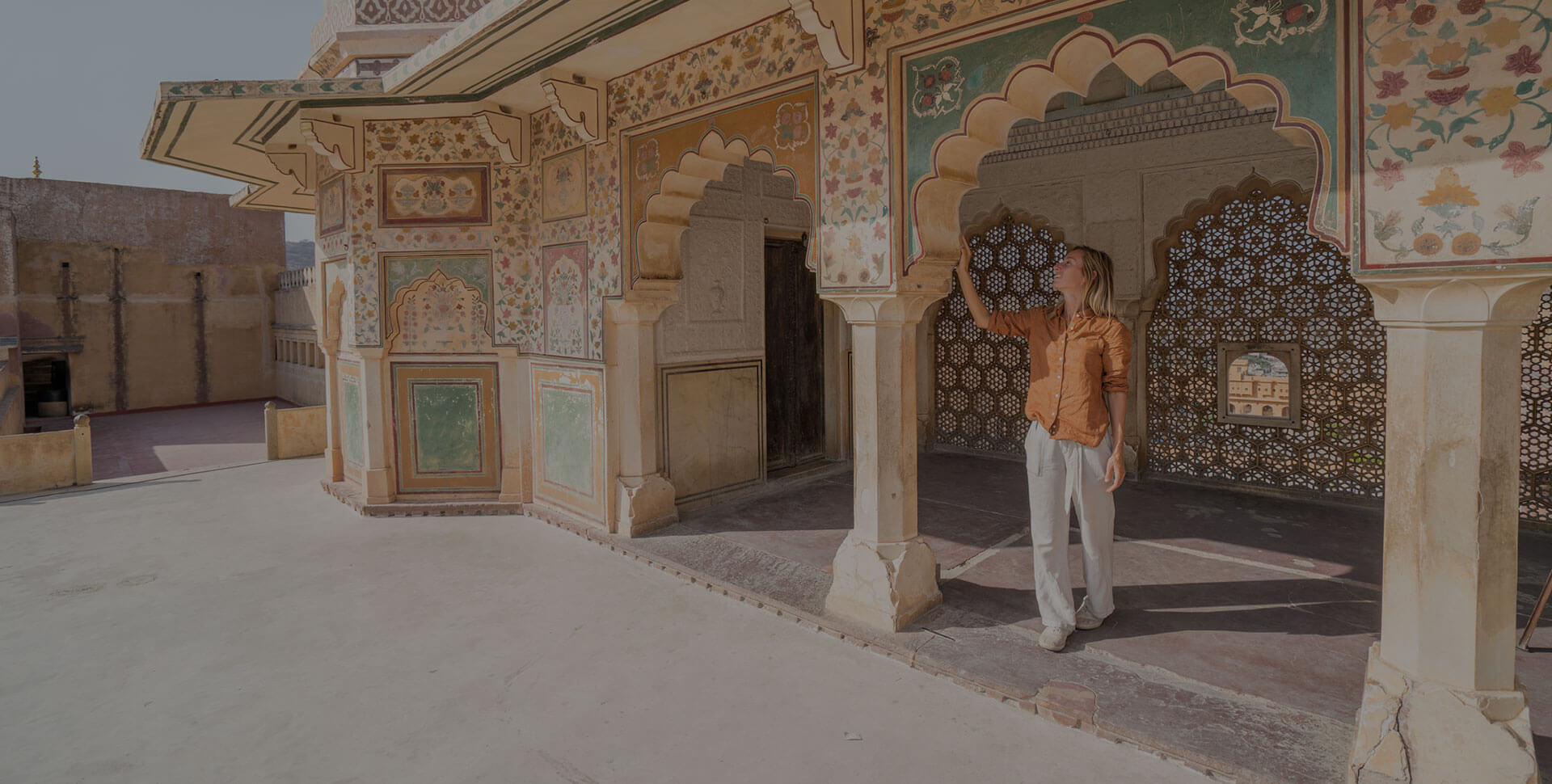


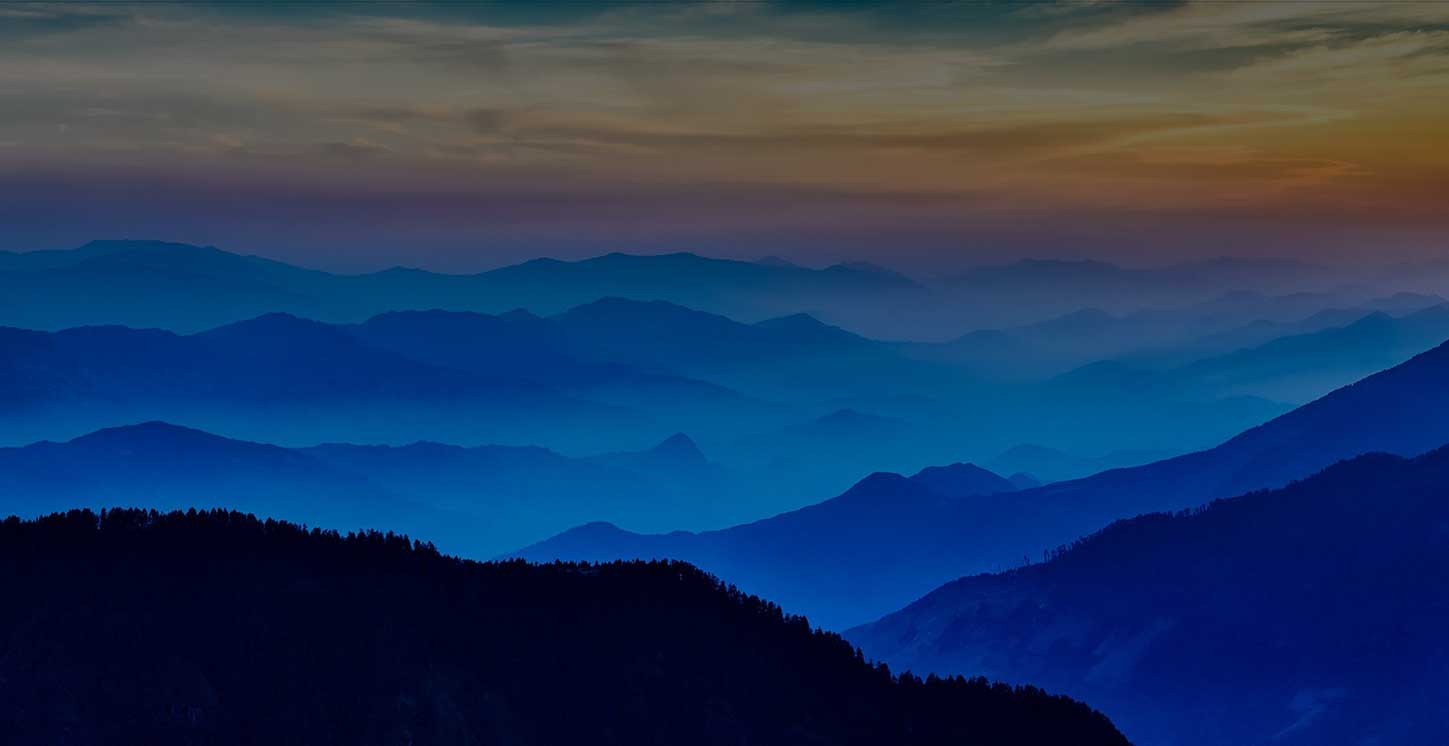
 +1-(765)-586-1210
+1-(765)-586-1210 +44-2030-2689-44
+44-2030-2689-44 +91 124 4361906
+91 124 4361906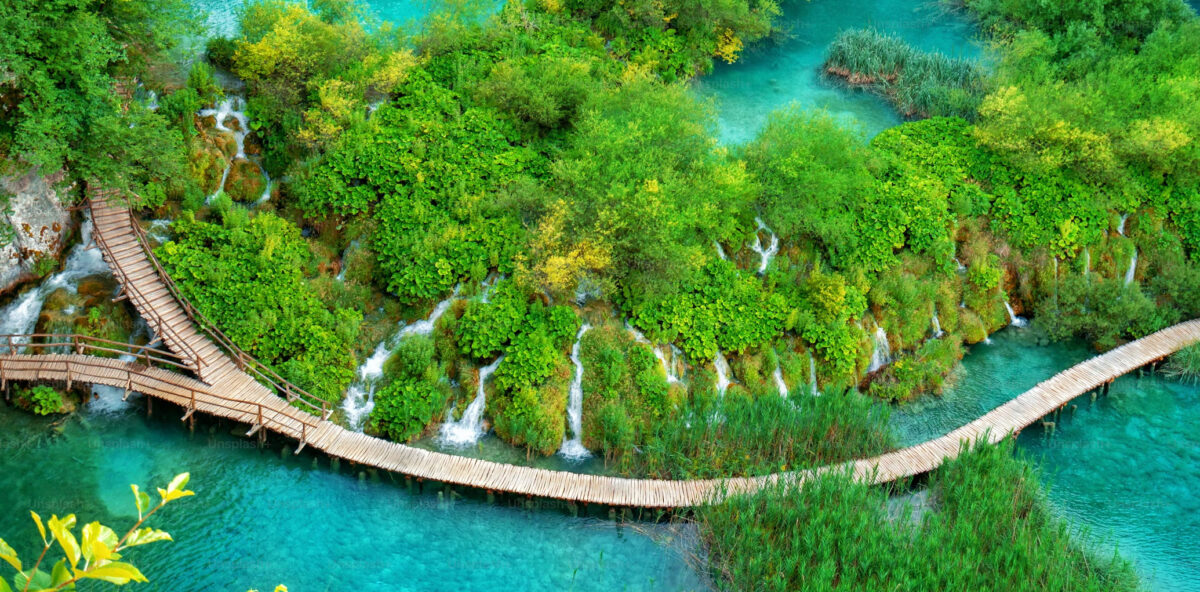



 +1-(765)-586-1210
+1-(765)-586-1210 +44-2030-2689-44
+44-2030-2689-44

